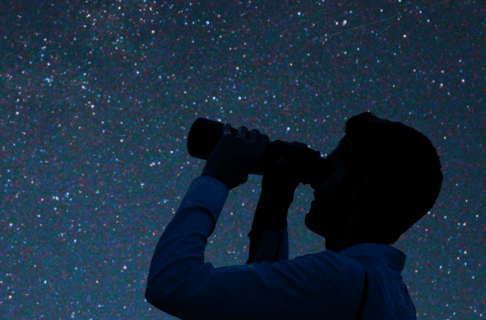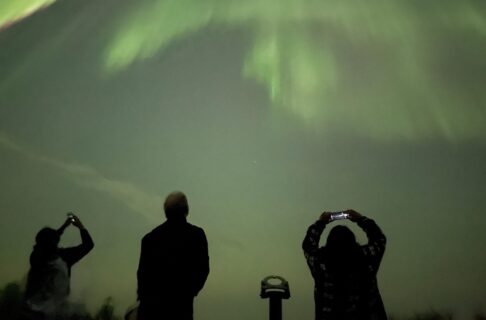Posted on: Monday March 30, 2020
Winnipeg residents have been reporting some unusual sightings in the night sky over the past few days. Bright star-like objects have been seen moving across the sky, following each other in a train. Sometimes half a dozen or more of them are visible at the same time. What are these?
Unfortunately, they won’t be “unusual” for very long. These are the StarLink satellites, launched by Elon Musk’s Space-X to deliver internet to remote corners of the globe. 60 satellites at a time are put up by the company’s Falcon-9 rocket, and they slowly spread out in a circle around the earth. For the first couple of weeks after launch, they are relatively close together, and all appear to travel in the same path across the sky. As of today, there are 362 of these satellites, but the plan is for 12,000 of them. As in, twice as many satellites as the number of stars you could see from a perfectly dark location.
And did we mention that each one is one of the brightest objects in the sky? They shine at about magnitude 1 or brighter, which means they’re brighter than the stars of the Big Dipper and as bright as the brighter stars. Only the planets and the moon, and maybe a few stars, will outshine a StarLink satellite.
It’s pretty easy to spot these satellites when they happen to be going over your town. Visit www.heavens-above.com and set it to your location, and you’ll get a list of all of the satellites visible that night. StarLink will make up a big chunk of that list. For example, from Winnipeg between 9:25 pm and 9:45 pm on Monday night, March 30, there will be 44 StarLink satellites visible (plus a few other satellites). The sky is getting to be a busy place!
StarLink has brought criticism from astronomers, who are already finding interference with the satellites getting into their field-of-view while trying to do science. Those concerned with the amount of space junk in orbit are also concerned, as none of these satellites has a re-entry plan and will just stay up there, cluttering orbit and posing a risk to any other satellites launched, including any attempts to send robots or humans to the other planets. We’re basically building a cage around the Earth, with StarLink satellites as the bars.






